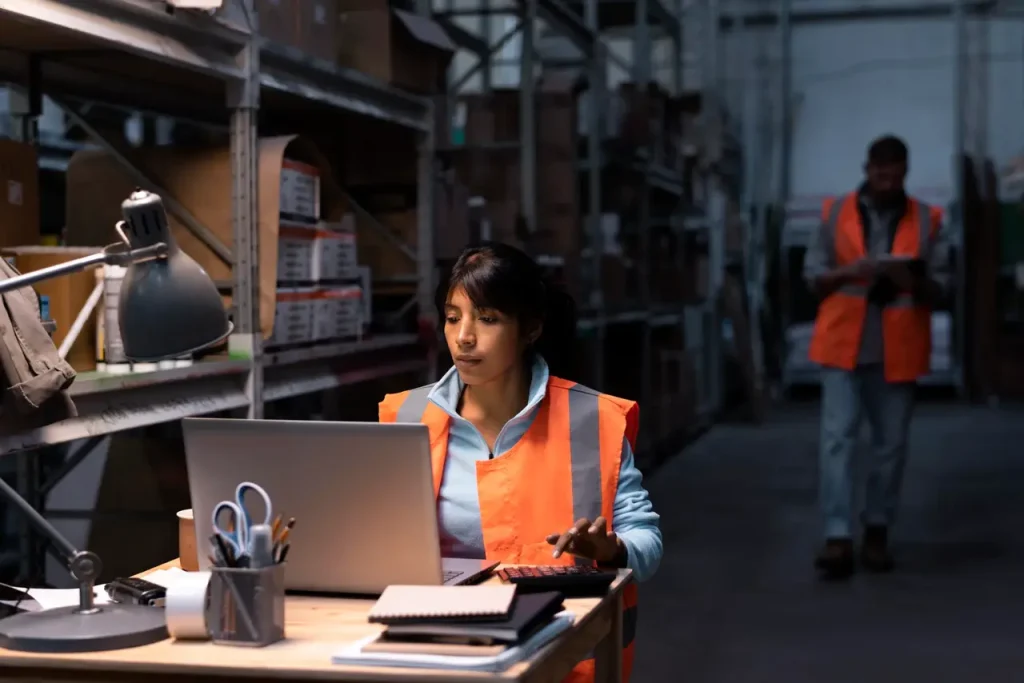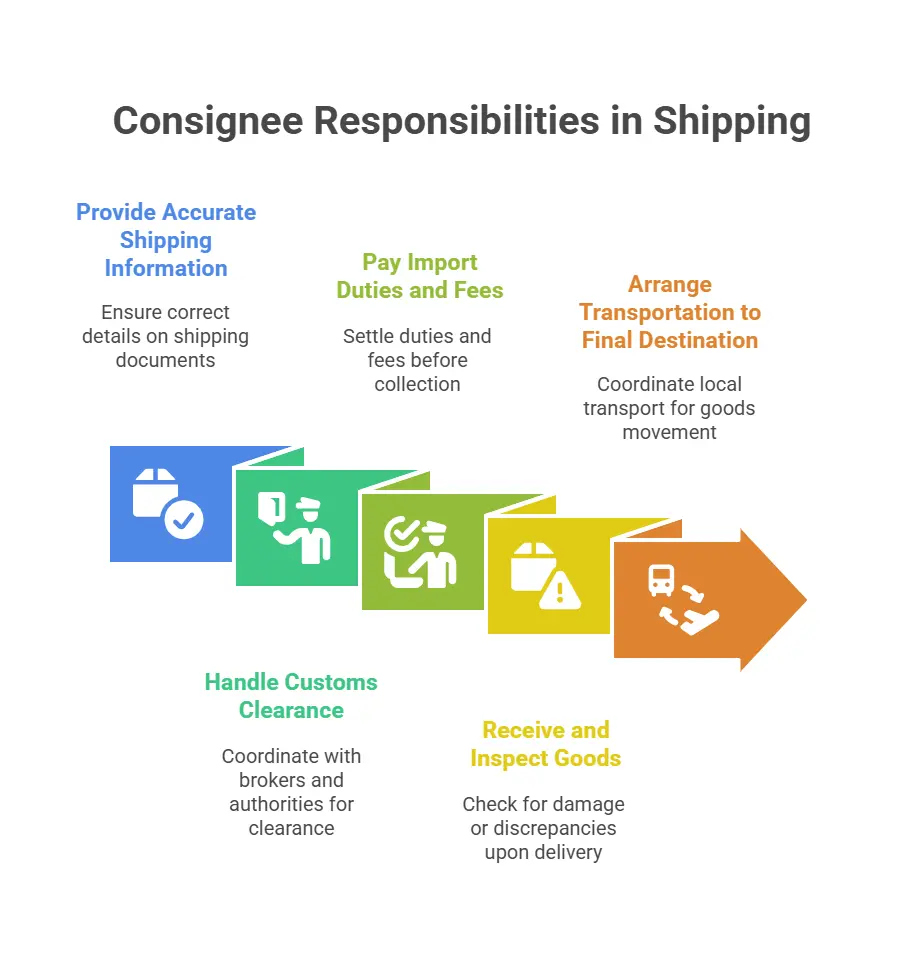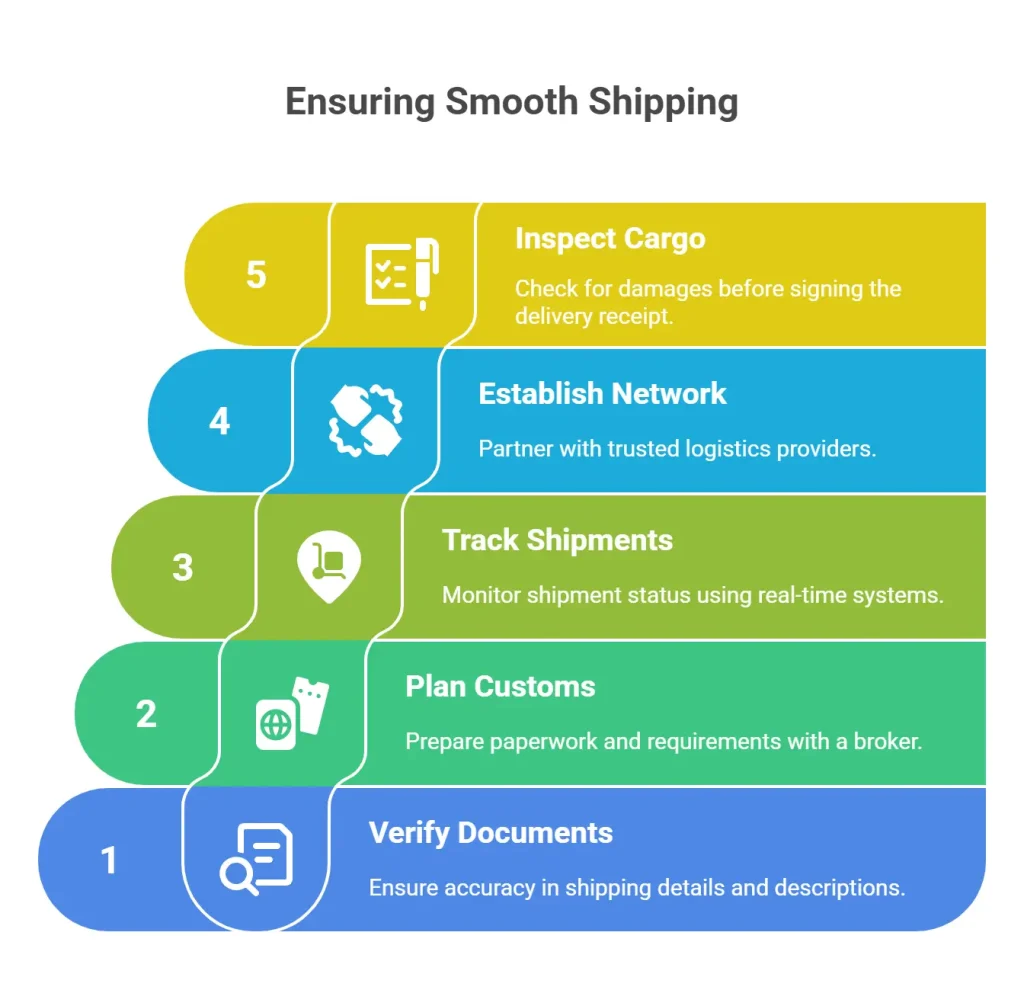Shipping and logistics involve various key players, and one of the most important entities in the supply chain is the consignee. Whether you are an importer, exporter, freight forwarder, or business owner, understanding the role of a customer is crucial for smooth and efficient transportation of goods.
This blog explores the definition, features, responsibilities, and legal aspects of a user in shipping, providing a comprehensive understanding of its role in global trade.

Who is the Consignee in Shipping?
A consignee is the individual or business entity that is legally designated to receive a shipment of goods. In simple terms, it is the party to whom the cargo is delivered upon arrival at the destination. The receiver is mentioned on the bill of lading (BOL), which serves as the shipping contract between the shipper and the carrier.
Key Points About a Receiver:
- The user can be the end customer, retailer, or distributor.
- It is responsible for receiving the shipment and completing necessary formalities.
- The user’s details must be accurately provided in shipping documents.
- It may be different from the buyer, depending on trade agreements.
Types of Consignees Meaning in Shipping
1. Ultimate User
An ultimate user is the final recipient of the goods, usually the buyer or end-user. This entity has the legal right to take possession of the shipment after clearing customs and fulfilling payment obligations.
2. Intermediate User
An intermediate user is a middle party involved in the supply chain before the goods reach the final destination. This can be a warehouse, freight forwarder, or customs broker that temporarily holds or processes the shipment.
3. Nominee User
A nominee user is designated by the shipper to receive goods on behalf of the actual buyer. This often occurs in international trade when businesses use third-party logistics providers to manage shipments.
Key Features of a Consignee in Shipping
1. Legally Recognized Recipient
A customer is the official recipient of a shipment. It is mentioned in shipping documents such as the bill of lading, air waybill, or delivery order, making it legally responsible for receiving the goods.
2. Responsible for Import Duties and Taxes
In international trade, the receiver is often responsible for customs clearance, import duties, and taxes before taking ownership of the goods. Compliance with customs regulations is crucial to avoid delays or penalties.
3. Can Be the Buyer or Another Party
A receiver may or may not be the actual buyer of the goods. In some cases, businesses ship goods to third-party warehouses, distribution centers, or resellers who act as the user.
4. Controls the Final Delivery Process
Once the shipment reaches the port or warehouse, the user arranges transportation, storage, and further distribution of the goods. The responsibility for handling the cargo shifts from the carrier to the user upon delivery.
Consignee and Consignor – The Difference
| Feature | Consignee | Consignor |
| Definition | Recipient of goods | Sender of goods |
| Role in Shipping | Takes possession of the shipment | Dispatches the shipment |
| Legal Responsibilities | Completes customs clearance and takes ownership | Ensures correct documentation and shipping process |
| Mentioned in Documents | Bill of Lading (BOL), Delivery Order | Shipping Invoice, Bill of Lading |
The consignor (or shipper) is the entity that sends the goods, while the consignee is the party that receives them. Understanding this distinction is critical for businesses involved in global trade.
Responsibilities of a Consignee

The user plays an active role in the shipping process. Below are the key responsibilities:
1. Providing Accurate Shipping Information
The user must ensure that the correct name, address, and contact details are mentioned in shipping documents to avoid delivery issues.
2. Handling Customs Clearance
For international shipments, users must coordinate with customs brokers and regulatory authorities to clear the goods. Required documentation includes:
- Bill of Lading (BOL)
- Commercial Invoice
- Packing List
- Import Licenses (if applicable)
3. Paying Import Duties and Fees
The user is often responsible for paying import duties, VAT, and clearance fees before collecting the goods from the port or warehouse.
4. Receiving and Inspecting Goods
Upon delivery, the user must inspect the shipment for damage or discrepancies and notify the carrier if any issues arise.
5. Arranging Transportation to Final Destination
Once the shipment is cleared, the user coordinates local transportation to move the goods to warehouses, distribution centers, or retail locations.
Legal and Commercial Importance of a User
1. Ownership and Liability
The user is legally recognized as the recipient of goods and may assume ownership and liability upon delivery. In “Freight on Board” (FOB) contracts, liability transfers to the user once the goods leave the port of origin.
2. Trade Compliance and Regulations
End-users must adhere to local import/export laws and ensure compliance with trade regulations to avoid penalties or shipment delays.
3. Impact on Supply Chain Efficiency
A well-coordinated user helps improve supply chain efficiency, ensuring goods reach their final destination without unnecessary delays.
How to Ensure Smooth Shipping as a User?

If you are a consignee, follow these best practices to ensure a hassle-free shipping process:
1. Verify Shipping Documents
Ensure that all shipment details, product descriptions, and consignee information are accurate in the Bill of Lading and invoices.
2. Plan for Customs Clearance in Advance
Work with a reliable customs broker or freight forwarder to handle paperwork and regulatory requirements before the shipment arrives.
3. Track Shipments Regularly
Use real-time tracking systems to monitor your shipment’s status and prepare for receiving the goods at the designated location.
4. Establish a Reliable Logistics Network
Partner with trusted carriers, warehousing providers, and local transporters to ensure smooth final delivery.
5. Inspect Cargo Upon Delivery
Always check for damages or missing items before signing the delivery receipt. Report any discrepancies immediately to the carrier.
Conclusion
The consignee plays a vital role in the shipping and logistics industry, ensuring that goods reach their intended destination efficiently and securely. From handling customs clearance and import duties to arranging final delivery, customers are responsible for ensuring smooth cargo movement in domestic and international trade.
Understanding the features, responsibilities, and legal aspects of a user can help businesses streamline supply chain operations, avoid costly delays, and maintain compliance with trade regulations. Contact Qodenext to optimise your supply chain bottlenecks today.
FAQs – What is Consignee in Shipping?
1. Can the consignee be different from the buyer?
Yes, they can be different entities. For example, in cases where goods are shipped to a third-party logistics provider, distributor, or retail partner, the user is not the direct buyer but still responsible for receiving the shipment.
2. What to do when the receiver dismisses the shipment?
If a consignee refuses a shipment, the cargo may be returned to the shipper, placed in storage, or re-routed based on the agreement between the buyer and seller. Additional fees for storage, handling, and return shipping may apply.
3. Is the user responsible for customs clearance?
In most cases, yes. The user is responsible for handling customs clearance, paying import duties, and ensuring compliance with regulations. However, in Delivered Duty Paid (DDP) agreements, the seller may handle these responsibilities instead.
4. What is the role of a freight forwarder in relation to a user?
A freight forwarder acts as an intermediary, helping to coordinate shipping, documentation, and customs clearance. The user is still the final recipient, but the forwarder manages the logistics.
5. Can there be multiple users for one shipment?
No, a single shipment typically has only one user listed on the Bill of Lading. However, if goods need to be distributed to multiple locations, a user may use a warehouse or third-party logistics provider to handle distribution.
6. Can the recipient of a shipment be changed once the goods are already in transit?
In certain situations, it is possible to change the recipient, or consignee, after a shipment has been dispatched. This usually requires the shipper to submit a formal request with updated paperwork to the carrier or freight forwarder. However, not all agreements or customs authorities permit this, so it is important to check your shipping terms and consult with your logistics provider beforehand.
7. Is the notify party always the same as the consignee?
No, the notify party is not always the same as the consignee. The notify party is simply the person or company who should be informed when the cargo arrives at its destination. They might be a customs broker, agent, or another third party helping with the import process, whereas the consignee is the one legally allowed to take possession of the goods.
8. What should be done if the consignee cannot be reached or refuses to accept delivery?
If the consignee is unreachable or refuses the shipment, the goods may be stored at the port, returned to the shipper, or disposed of in accordance with local regulations and the shipping contract. Any costs linked to additional storage, return shipping, or disposal typically fall on the party responsible as per the initial agreement.
9. Is the consignee responsible if the cargo is damaged during transport?
Responsibility for damaged cargo depends on the shipping terms outlined in the purchase agreement. Often, risk transfers at a certain point along the shipping journey (like the port of loading or unloading). If damage occurs before the consignee has officially received the goods, the carrier or shipper may be liable. If the damage is discovered after acceptance, the consignee may find it harder to claim compensation unless the issue is immediately documented.
10. Does a consignee need to be a company, or can an individual act as a consignee?
Both individuals and companies can be consignees. For business-to-business shipments, the consignee is typically a company or distributor. For personal imports, such as someone ordering items online from another country, the individual’s name and address are listed as the consignee on shipping documents.







